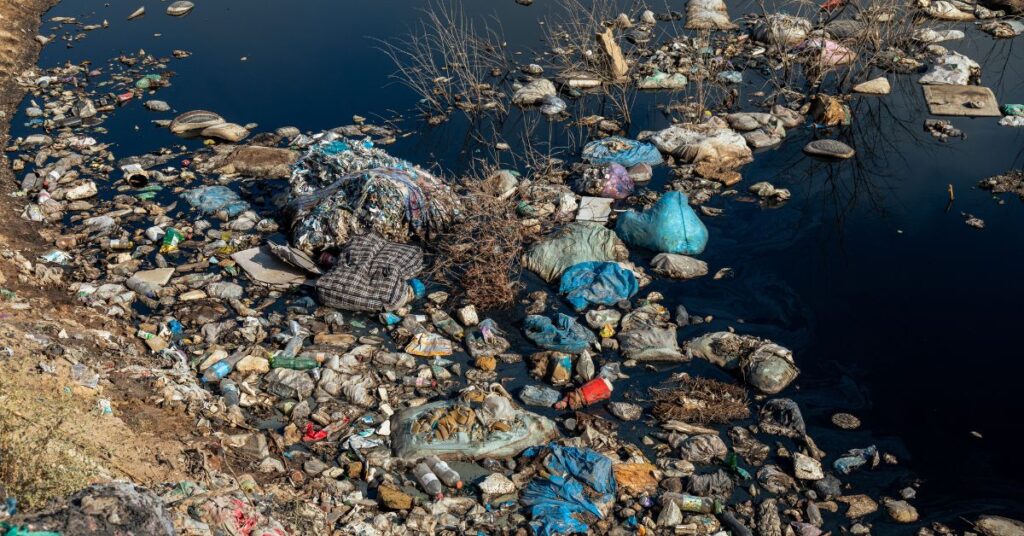Learn all basic ecology terms now

What is Ecology Definition?
The term “Ecology” is a combination of two Greek words:
“Oikos”: Home or the place where you live in.
“Logos”: Study
The scientific study of the relationship of different living organisms with each other and with the non-living elements present in their surroundings is called Ecology.
What is Environment?
The collection of everything around an organism that directly or indirectly affects him/her is known as the environment.
Every organism is somehow dependent on its environment for its survival. Like for food, shelter, water, oxygen, energy, etc.
Example of Biotic and Abiotic Factors in an Ecosystem?
Biotic components are nothing but living components in an environment.
Here are some biotic examples: Humans, Animals, Green & non-green plants, Decomposers, Parasites
Abiotic components are the non-living components present in your environment.
Here are some abiotic examples: Water, Energy, Temperature & Radiation, Gases, Fire, Soil, etc.
Difference between Internal Environment and External Environment of an Organism?
Like the name suggests, the external environment is the sum of everything surrounded by an organism.
Let’s take the example of a Tiger. Its external environment consists of biotic components like other animal species, green plants, decomposers, and the abiotic components are temperature, energy, oxygen, soil, etc.
The internal environment of an organism is separated from its external environment by its outermost body surface.
In the case of a Tiger, the internal environment is the sum of all things that are present inside its body.
The internal environment is relatively constant in comparison to the external environment, which is quite dynamic.
How many Levels of Organization are there in Ecology?
From a broad perspective, there are SIX different levels of ecology & they are:
1. Individual
2. Population
3. Community
4. Ecosystem
5. Biome
6. Biosphere
How do you describe an individual in Ecology?
An individual is the smallest and first among six levels of ecology. They are primarily individual living things, like a plant, or an animal having different body parts working together to perform different life processes.
Example: a man, a plant, fungi, and bacterium.
What is Population in Ecology?
A population is a group of individuals, preferably of the same species staying in a confined area at a certain point in time.
The population is not fixed, it changes from time to time.
What is Population Growth?
If we compare the number of individuals in a population at a certain time interval, the variation percentage is called population growth.
Example:
+5%: Increase in the individual count by 5%
0: No change in individual count
-5%: Decrease in the individual count by 5%
Primary Reasons for Population Growth & Population Decline?
Though there are many factors that contribute to population growth, here are two most important aspects:
1. Increase in the birth rate
2. Immigration
Similarly, the two most important factors for population decline are:
1. Increase in the death rate
2. Emigration
How Animals and Plants are Interdependent on each other?
Animals require plants for their food, shelter, oxygen, and so many other things.
On the other hand, plants also need animals for efficient pollination, dispersal of seeds, and soil microorganisms for their overall growth.
What is the difference between a major community and a minor community?
Major Community
Major communities are relatively independent of outside communities. However, for survival, they need energy from the sun.
Major communities are diverse, self-regulating, and self-sustaining. The tropical evergreen jungle in North-Eastern states is an example of a major community.
Minor Community
Unlike major communities, minor communities are highly dependent on adjacent communities for their food, and energy requirements.
Example: Fishes in a home aquarium.
What is an Ecosystem?
The ecosystem is the combination of multiple communities of both living and non-living components, exchanging essentials for each other’s necessities and survival.
Each element of the ecosystem is greatly dependent on other species and components. The inter-dependency suggests if one species/element is damaged, it would affect everyone living in that ecosystem, directly or indirectly.
The size of an ecosystem is not fixed at all. If you compare examples of ecology, it can be as small as a tree/pond, or as giant as a desert.
How Do You Describe a Sustainable Ecosystem?
We can call an ecosystem sustainable if all the existing components are in balance, without any fear of extinction. Besides, in a sustainable ecosystem, the essential requirements of all species are present inside the ecosystem only.
What are the Abiotic Components of an Ecosystem?
The abiotic components of an ecosystem include a lot of elements. These are the sum of all non-living and inorganic elements of an ecosystem. Besides physical processes like floods, earthquakes, fire, and chemicals like oxygen are also part of abiotic components of an ecosystem.
Here are some important abiotic components that your show know:
Energy: The ecosystem gets its energy from the sun. A plant can access them directly, whereas animals obtain it indirectly from the plants.
Rainfall: Fulfils the water requirement of the ecosystem. Besides, the water bodies act as a habitat for numerous ecosystems.
Temperature: Every species has its limitation to absorb a particular range of temperature. So, the temperature is crucial for the existence of a species in a particular environment.
Atmosphere: The atmosphere around us offers a suitable condition to live in.
Apart from these, there are also many other abiotic components that exist in the ecosystem, such as minerals, longitude, altitude, and so on.
Who are Primary Producers or Autotrophs?
Primary producers are responsible in producing food for the entire ecosystem by synthesizing carbohydrates from CO2 and water under the presence of sunlight by a process called Photosynthesis.
So, all the green plants are primary producers. Besides, certain algae (blue-green algae) and bacteria species are also considered as primary producers.
Who are Macro Consumers?
Like every other consumer out there, Macro Consumers also are not able to produce their food. They are dependent on plants or animals or even both for their food requirements.
Macro consumers are of many types:
Herbivores/Primary Consumers
They eat only plants. Herbivores are also called primary consumers.
Example: Rabbit, Deer, Goat, etc.
Secondary Consumers
Secondary consumers feed on primary consumers like Goats, Cows.
Example: Wolves.
Tertiary Consumers
Tertiary consumers feed on secondary consumers.
Example: Lion, Tiger.
Omnivores
Omnivores consume both plants and animals.
Example: Human, Monkeys.
What are Micro Consumers?
Micro consumers are also called Decomposers or Saprotrophs.
They get their energy by decomposing the dead organic matter. They help the environment to keep clean and hygienic.
What is Homeostasis?
A particular ecosystem is well-capable for maintaining its equilibrium regulating both functional and structural processes. This self-regulation and self-dependency are called Homeostasis.
What is Ecotone?
When two or even more well-diverse ecosystems merged into each other that junction is called Ecotone.
Example: Riverbank where river ecosystem and land ecosystem meets.
What are the Characteristics of an Ecotone?
An Ecotone is also called the Zone of Tension, as in most cases, the condition is a mixture of the adjacent ecosystems.
You might find certain species living in a well-developed Ecotone that are not found in any of the adjacent ecosystems at all.
A progressive increase in population is quite common in Ecotone.
What is Edge Effect and Edge Species in Ecology?
The population density of few species and the total number of species are much higher at Ecotone than at the surrounding ecosystems. This particular phenomenon is called the Edge Effect, and the highly populated species in Ecotone are called edge species.
Take the example of birds. A large population of birds prefers to stay in the Ecotone that exists between desert and forest ecosystems. Here the bird is the edge species.
What is Niche in Ecology?
Niche is the sum of the physical, biological, and chemical requirements of a species in order to survive, and reproduce in a sustainable way.
There are four primary niche profiling.
1. Habitat Niche
2. Food Niche
3. Reproductive Niche
4. Physical & Chemical Niche
What is Biosphere?
The biosphere has all kinds of essentials to host life. On an approximate level, the range of the biosphere stretches from 6,000m altitude (above sea level) to 200m below sea level.
However, the biosphere is absent in the North Pole and South Pole due to the extreme climate.
Editor’s View
We have tried our level best to gather all the basic Ecological terminology in one place and explain them in the simplest possible form.
Like every other subject out there, Ecology is an ocean and it is not humanly possible to complete the entire subject on one blog.
If you have any sorts of doubt, or you feel anything important missing here, feel free to suggest us in the comment section. We would get back to you and update the existing blog accordingly.
Keep exploring different Environment & Ecology related topics here & don’t forget to follow our social channels.
#BleedGreen


The author has a specialization in domains like environmental science and sustainable energy. Being in the writing and editing industry for half a decade, he has produced numerous exceptional academic content and blog posts in multiple popular platforms.
At BleedGreen, he will share his solution-oriented thoughts to tackle sensitive issues like climate change, the greenhouse effect, and deforestation.





Dude, a really well compiled article, which clears a lot of doubts and makes us aware of terminology,
Keep the good work dude
Pingback: Effects of Environmental Pollution on Human Health Essay - BleedGreen
Pingback: Developed VS Developing Countries: Decoding the Western Hypocrisy on Climate Change - BleedGreen
Pingback: Negative Environmental Impacts of Renewable Energy - BleedGreen
Pingback: How To Make Terrace Garden At Home (2021): Learn From An Expert
Pingback: 5 Best Meat Alternatives For Vegetarians - BleedGreen
Pingback: World Environment Day 2021: UN Decade Of Restoration(2021-30)
Pingback: Here Is How To Adopt Sustainable Construction In 2021 - BleedGreen
Pingback: How A Businessman From Chennai Dedicated His Life Cleaning The Marine Waste: Learn How To Keep Beaches Clean From An Expert - BleedGreen
Pingback: 100 Soil Pollution Facts And Statistics Everybody Should Know (2021 Updated) - BleedGreen
Pingback: Green Fashion In 2021: A Comprehensive Study - BleedGreen
Pingback: 100 Interesting Water Pollution Facts (2021 Updated) - BleedGreen
Pingback: ICT For Environment: An Emerging Actor For Environment Protection And Sustainability - BleedGreen